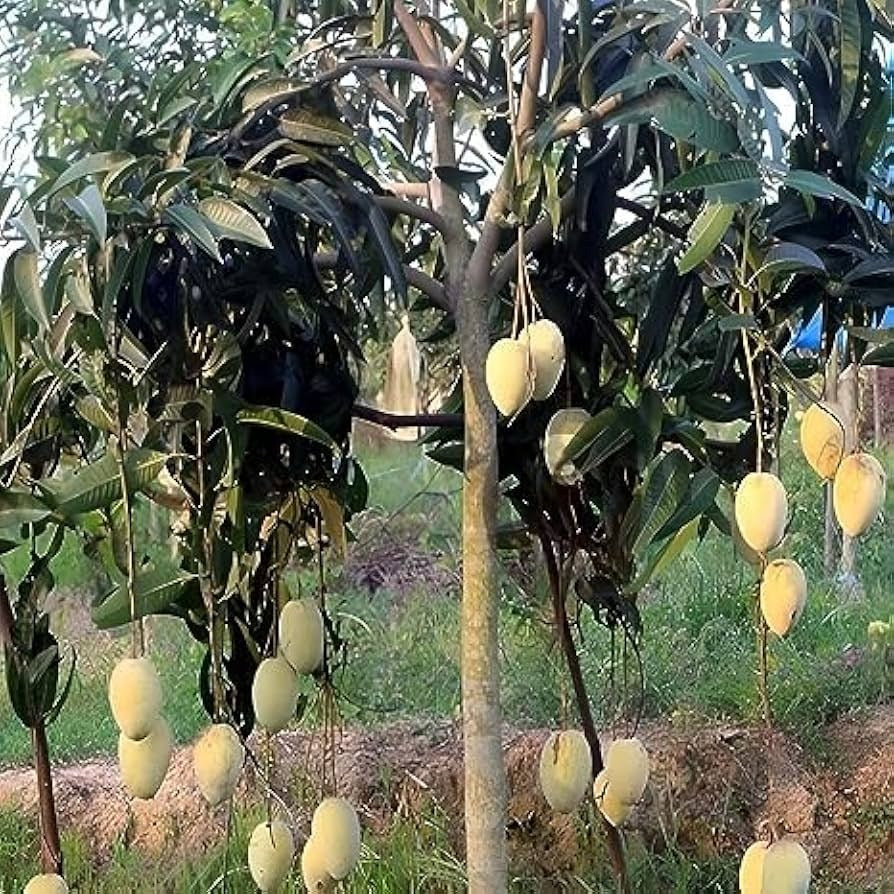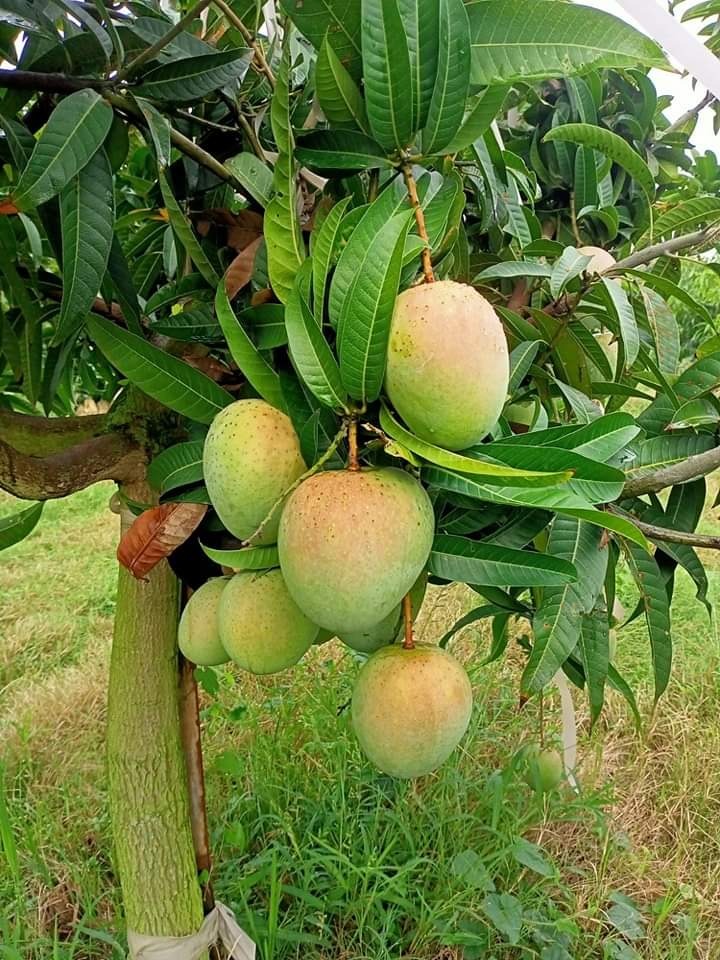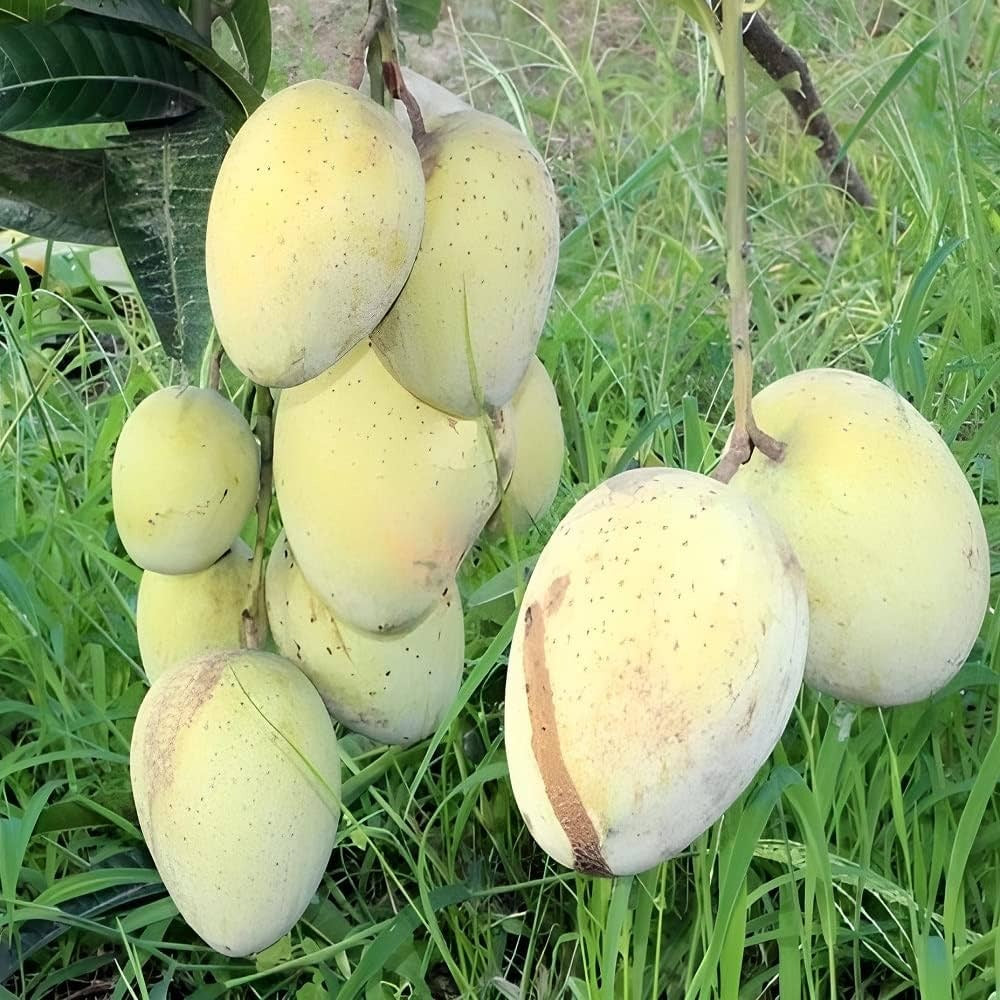Plantparadise
The Gomati mango (Mangifera indica 'Gomati')|Gomati mango tree for sale
The Gomati mango (Mangifera indica 'Gomati')|Gomati mango tree for sale
Regular price
Rs. 850.00
Regular price
Rs. 1,800.00
Sale price
Rs. 850.00
Unit price
per
Couldn't load pickup availability
The Gomati mango (Mangifera indica 'Gomati') is a grafted variety of the mango tree, known for its high-quality fruit. Here is a detailed description of the Gomati mango grafting plant:
Plant Characteristics
- Height: As a grafted plant, the Gomati mango typically reaches a height of 3-5 meters (10-16 feet) when mature, though it can grow taller in optimal conditions.
- Canopy: Dense, rounded, and symmetrical with a spread of similar width.
- Leaves: Evergreen, lanceolate to oblong in shape, glossy, and dark green. New leaves are often reddish or bronze in color.
Flowers
- Appearance: Small, white to pale yellow, and fragrant.
- Arrangement: Panicles (large clusters) at the ends of branches.
- Blooming Period: Usually blooms in late winter to early spring.
Fruit
- Type: Drupe.
- Shape: Typically oval to oblong.
- Size: Medium to large, ranging from 250 to 400 grams.
- Skin: Smooth, thin, and turns golden-yellow to orange when ripe.
- Flesh: Firm, juicy, fiberless, and deep orange in color.
- Taste: Sweet with a rich, aromatic flavor.
Growth Requirements
- Climate: Prefers tropical to subtropical climates.
- Temperature: Thrives in temperatures between 24-30°C (75-86°F). Sensitive to frost.
- Soil: Well-drained, sandy loam soil with a pH between 5.5 and 7.5.
- Watering: Requires regular watering, especially during dry periods, but does not tolerate waterlogging.
Grafting Details
- Rootstock: Typically grafted onto a hardy, disease-resistant rootstock to improve vigor and resistance to soil-borne diseases.
- Scion: The Gomati mango variety is used as the scion, ensuring the desired fruit characteristics.
- Method: Common grafting methods include cleft grafting, veneer grafting, and approach grafting.
Cultivation
- Propagation: Primarily through grafting to maintain the specific characteristics of the Gomati variety.
- Pruning: Regular pruning to remove dead or diseased branches, and to shape the tree.
- Pests/Diseases: Susceptible to pests like mango hoppers, mealybugs, and diseases such as anthracnose and powdery mildew.
Uses
- Culinary: Consumed fresh, used in juices, desserts, pickles, and culinary dishes.
- Nutritional: Rich in vitamins A and C, dietary fiber, and antioxidants.
- Other: Grafted mango trees are often used in home gardens and commercial orchards for their reliable fruit production and manageable size.
Advantages of Grafting
- Early Fruiting: Grafted mango trees often start bearing fruit earlier than seed-grown trees.
- Consistent Quality: Grafting ensures the consistency of fruit quality and taste.
Materials
Materials
Shipping & Returns
Shipping & Returns
Dimensions
Dimensions
Care Instructions
Care Instructions






